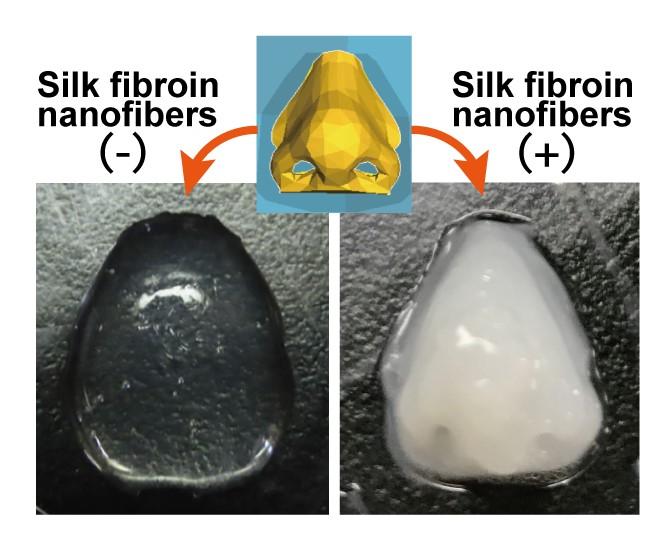
Photo: 3D printed constructs using hyaluronic acid-based inks free of silk fibroin nanofibers (-) and containing silk fibroin nanofibers (+).
view more
Credit Image: Osaka University
Osaka, Japan – How do you test, in early-stage research, whether a potential pharmaceutical effectively targets a human tumor, organ, or some other part of the body? How do you grow a new hand or some other body part? Researchers are in the early stages of using 3D cell printing technology to make developments like these happen. A standard way–currently unavailable–to fix the cells in place after printing would help researchers avoid having to ‘reinvent the wheel’ in every new investigation.
In a study recently published in Materials Today Bio, researchers from Osaka University have used silk nanofibers obtained by mechanical disintegration to enhance the printing process without damaging the cells or cell assemblies. An attractive point of silk for this application is that silk is believed to be a safe material for humans. This development will help bring 3D cell printing research out of the laboratory and into real-world biomedical use.
To obtain the fibers, the researchers started with virgin silk, then removed the protein sericin from it because this protein causes inflammation in patients. Next, the researchers ground the remaining biocompatible material into nanofibers. The fibers can be sterilized–without damaging them–for medical use, with common laboratory equipment.
“Our silk fibers are excellent additives to bioink cell printing media,” says lead author Shinji Sakai. “They are compatible with many media, such as those containing gelatin, chitosan, or hyaluronic acid, giving them a broad range of potential applications.”
The main purpose of the fibers was to ensure that the cells in the bioink retained their 3D positioning after printing without damaging the cells. The fibers fulfill this purpose by enhancing the integrity of the bioink and minimizing the damaging high mechanical stresses often placed on cells during printing.
“Various mechanical experiments say the same thing: the nanofibers enhanced the properties of the printing media,” explains Professor Sakai. “For example, Young’s modulus–a measure of stiffness–increased several-fold and remained enhanced for over a month.”
The fibers help printed configurations retain their structural integrity after printing. For example, a nose-shaped configuration retained its shape only when printed with bioink containing the silk fibers. Over 85% of the cells in the bioink remained alive after a week in the printed bioink with or without the added fibers, indicating that adding the fibers did not damage the cells.
Current cell printing technology often heavily damages cells or does not retain the intended shape for long. The research here helps overcome these limitations in a way that will help advance drug discovery, regenerative medicine, and many other ongoing high-impact biomedical research fields, and has the potential added economic benefit of reinvigorating the silk industry.
###
The article, “Silk fibroin nanofibers: A promising ink additive for extrusion 3D bioprinting,” was published in Materials Today Bio at DOI: https:/
About Osaka University
Osaka University was founded in 1931 as one of the seven imperial universities of Japan and is now one of Japan’s leading comprehensive universities with a broad disciplinary spectrum. This strength is coupled with a singular drive for innovation that extends throughout the scientific process, from fundamental research to the creation of applied technology with positive economic impacts. Its commitment to innovation has been recognized in Japan and around the world, being named Japan’s most innovative university in 2015 (Reuters 2015 Top 100) and one of the most innovative institutions in the world in 2017 (Innovative Universities and the Nature Index Innovation 2017). Now, Osaka University is leveraging its role as a Designated National University Corporation selected by the Ministry of Education, Culture, Sports, Science and Technology to contribute to innovation for human welfare, sustainable development of society, and social transformation.
Website: https:/
TDnews (tunisiesoir.com)














